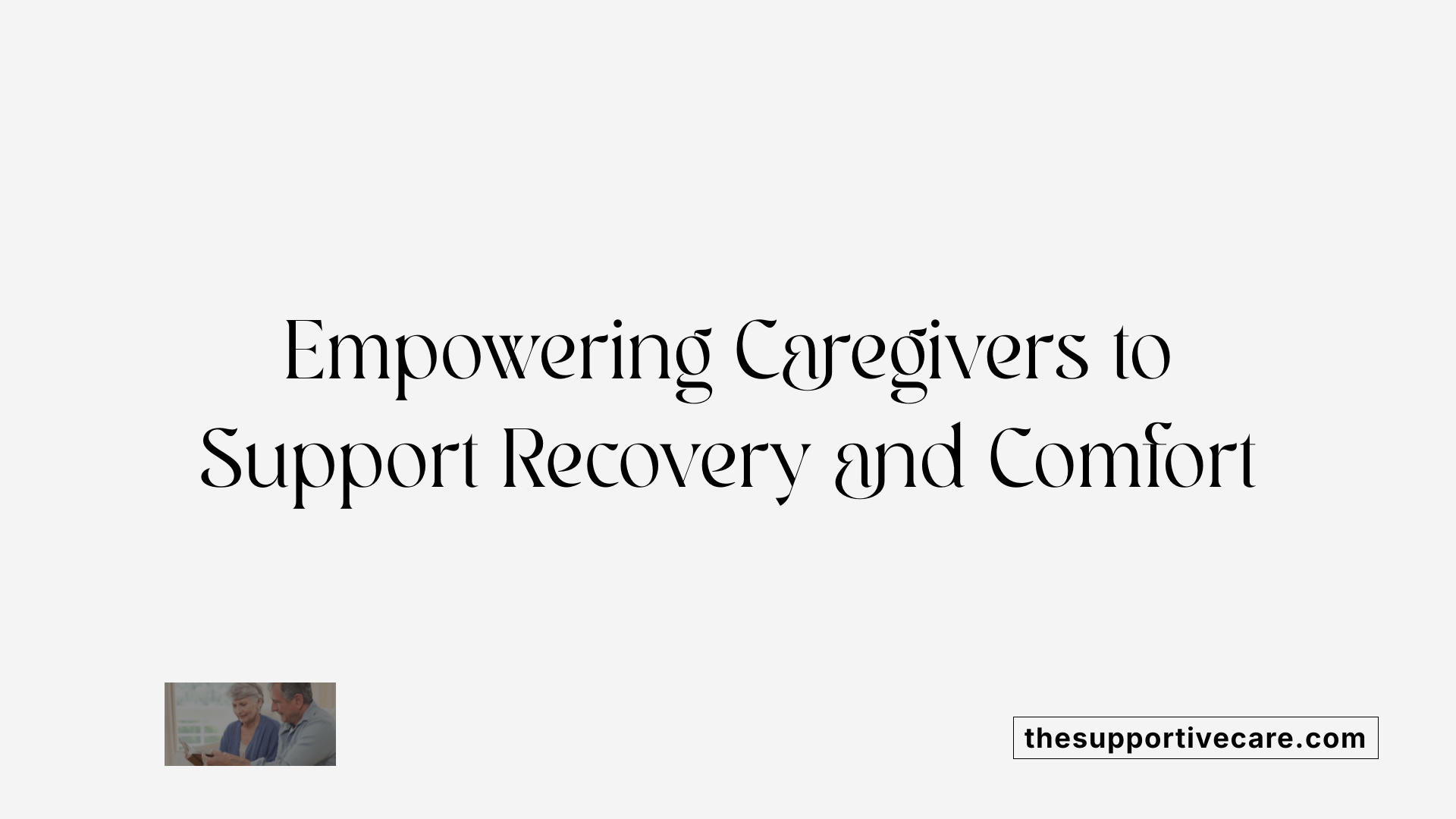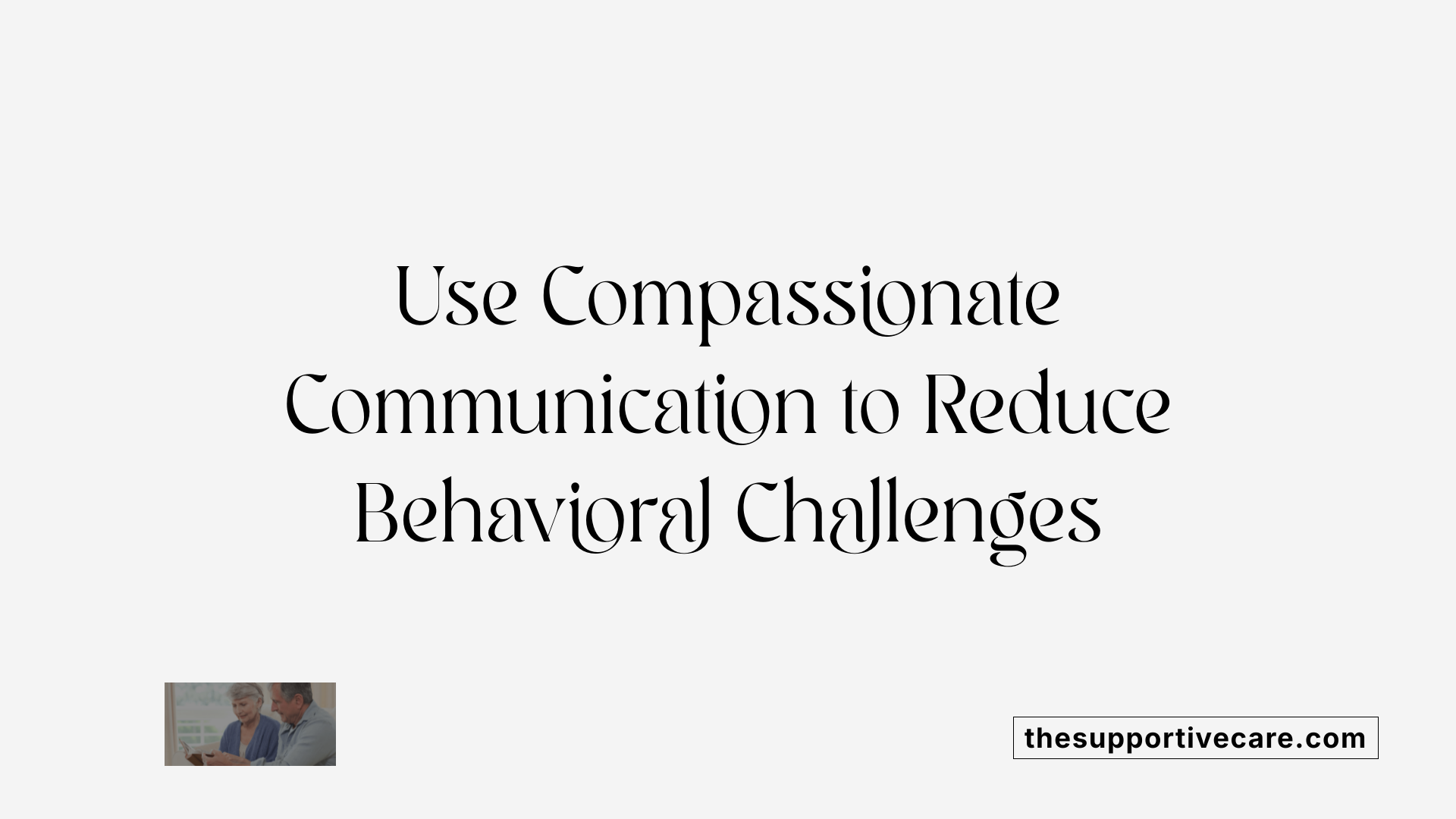A Guide to Behavioral Strategies and Care Approaches for Delirium in Older Adults
Delirium is a sudden and often reversible change in mental status that predominantly affects seniors. Recognizing its symptoms, understanding underlying causes, and implementing effective behavioral support strategies are crucial for preventing complications and promoting recovery. This article provides a comprehensive overview of delirium in seniors, emphasizing non-pharmacological interventions, caregiving approaches, communication techniques, and available resources.
Recognizing Delirium in Seniors: Symptoms, Types, and Causes
What are the symptoms, causes, and types of delirium in seniors?
Delirium in older adults is an abrupt disturbance in mental clarity, attention, and consciousness. It often develops rapidly—within hours or a few days—and can fluctuate in severity throughout the day. Recognizing these symptoms early is vital for timely intervention and supportive care.
Common signs include confusion, difficulty focusing, disorientation to time and place, agitation, and mood swings. Patients may experience hallucinations, paranoia, or sleep disturbances. Behavioral changes such as restlessness or withdrawal are also typical.
There are three main forms of delirium:
- Hyperactive: Marked by agitation, restlessness, and sometimes aggressive behavior.
- Hypoactive: Characterized by drowsiness, lethargy, and withdrawal, often overlooked because of subtlety.
- Mixed: Features alternating symptoms, switching between hyperactive and hypoactive states.
Delirium's causes are often multifactorial. In seniors, common triggers include infections like urinary tract infections or pneumonia, dehydration, and electrolyte imbalances.
Medications can also contribute, especially sedatives, anticholinergics, or opioids. Surgical procedures, especially with anesthesia, and severe illnesses are notable risk factors.
Underlying chronic conditions, such as dementia, increase susceptibility. Sensory impairments like vision or hearing loss and environmental factors like unfamiliar surroundings also contribute.
The condition is usually related to underlying issues like metabolic disturbances, blood sugar irregularities, blood infections, or organ failure. It may also be precipitated by trauma, severe pain, or withdrawal from substances such as alcohol or prescribed sleep aids.
Proper diagnosis involves observing specific symptoms, rapid onset, and often the use of screening tools like the Confusion Assessment Method. Identifying and treating the underlying causes quickly can prevent long-term cognitive decline and reduce mortality risk.
In summary, delirium in seniors appears suddenly with fluctuating symptoms, presenting either hyperactively, hypoactively, or as a combination. Recognizing its signs and understanding provoking factors is essential for early intervention and improved outcomes.
Identifying Early Signs of Delirium in Older Adults

What are the signs of delirium in older adults?
Recognizing early indicators of delirium is essential, especially in vulnerable populations like older adults. Delirium often manifests suddenly and can fluctuate in severity throughout the day. The most common signs include an abrupt change in mental status, with confusion and disorientation being prominent. Patients may struggle to recognize their surroundings, forget recent events, or become easily distracted.
Attention deficits are a hallmark feature — they might look inattentive or have difficulty focusing on conversations or tasks. Alongside cognitive disturbances, physical and behavioral changes are evident. Symptoms such as hallucinations, paranoia, mood swings, agitation, or restlessness may occur, especially in hyperactive delirium.
Sleep disturbances are common, with patients experiencing difficulty maintaining normal sleep-wake cycles, often becoming more agitated or drowsy at inappropriate times. Personality changes or emotional lability might also be observed, which can alarm caregivers and healthcare providers.
Delirium can be categorized into three types:
- Hyperactive: marked by agitation, restlessness, and hallucinations.
- Hypoactive: characterized by lethargy, drowsiness, and decreased activity.
- Mixed: fluctuating between hyperactive and hypoactive states.
In many cases, especially in elderly patients, hypoactive delirium may be overlooked because symptoms are subtle. Therefore, vigilance is important.
Distinguishing delirium from dementia is crucial. Unlike dementia, which develops gradually and persists over time, delirium has a rapid onset—often within hours to days—and symptoms tend to fluctuate.
Early detection is vital for prompt intervention. Investigating underlying causes such as infections, metabolic disturbances, medication effects, or organ failure allows for targeted treatment. When identified early, delirium is often reversible, reducing the risk of long-term cognitive decline and other serious complications.
In summary, early signs include sudden confusion, disorientation, fluctuating consciousness, visual hallucinations, personality or mood changes, sleep pattern disruptions, and behavioral agitation. Caregivers and healthcare providers must remain alert to these symptoms to initiate timely evaluation and management.
Understanding Delirium Risk Factors and Prevention Strategies

What are the risk factors contributing to delirium in seniors?
Delirium commonly affects older adults, especially those hospitalized or recovering from surgery. Several factors heighten their vulnerability to this condition.
A primary risk factor is age itself. As individuals grow older, they experience natural organ deterioration and cerebrovascular changes, making their brain more susceptible to disturbances. Pre-existing cognitive impairments, such as dementia or mild cognitive impairment, significantly increase the risk.
Sensory deficits also play a role. Hearing and vision loss can lead to disorientation and confusion, especially when compounded by an unfamiliar hospital environment.
Other contributing factors include frailty, multiple existing health conditions (comorbidities), and neurological disorders like stroke or Parkinson's disease. These conditions weaken resilience and impair cognitive function.
Acute medical issues often precipitate delirium. Common triggers include infections such as urinary tract infections or pneumonia, metabolic imbalances, dehydration, severe illnesses, and organ failures. Surgical procedures with anesthesia and the use of certain medications, especially sedatives, anticholinergics, opioids, and polypharmacy, can directly or indirectly lead to delirium.
Emotional and nutritional factors are also relevant. Depression, alcohol or medication withdrawal, malnutrition, sleep disturbances, and significant pain can all predispose individuals to developing delirium.
Environmental and medical risk factors
Hospitals and care environments can inadvertently contribute to delirium through sensory overload or deprivation, disorientation, and sleep disruption. Lack of familiar objects, poor lighting, and excessive noise increase confusion.
Medications are a notable environmental risk. Drugs with anticholinergic properties, benzodiazepines, and opioids are linked to higher incidence rates when used excessively or inappropriately.
Surgical interventions, especially those involving anesthesia, can activate systemic inflammatory responses and alter neurotransmitter levels, further risking delirium.
Modifiable risks and prevention
Preventing delirium involves managing risk factors that can be altered or controlled.
Non-pharmacologic strategies are foundational. These include ensuring proper hydration, maintaining nutrition, promoting early mobility, and providing sensory aids like glasses and hearing devices.
Creating a calming environment with good lighting, reducing noise levels, and using familiar objects or photographs can help orient and reassure patients.
Regular reorientation, effective communication, and involving family members in care enhance understanding and reduce confusion.
Sleep hygiene is crucial. Establishing a consistent bedtime routine, minimizing nighttime disturbances, and avoiding sleep-disruptive medications are beneficial.
Healthcare providers should carefully review and manage medications, avoiding polypharmacy and using drugs with minimal cognitive side effects.
Environmental modifications such as adequate lighting during the day, quiet spaces at night, and minimizing restraints and unnecessary tubes or catheters further diminish risk.
Finally, addressing acute medical issues promptly—like infections, metabolic disturbances, or dehydration—can prevent the onset or worsening of delirium.
| Risk Factors in Seniors | Specific Causes | Prevention Measures |
|---|---|---|
| Advanced age | Organ deterioration, cerebrovascular changes | Regular health assessments, cognitive engagement |
| Pre-existing dementia | Cognitive reserve reduction | Cognitive therapies, familiar routines |
| Sensory impairment | Hearing and vision loss | Corrective aids, environmental adaptation |
| Acute illness | Infections, metabolic imbalance | Prompt medical intervention |
| Medications | Sedatives, anticholinergics, polypharmacy | Rational medication use, review schedules |
| Environmental factors | Disorientation, noise, poor lighting | Environmental modifications |
| Emotional factors | Depression, anxiety, withdrawal | Psychological support, social engagement |
Understanding the multifactorial nature of delirium allows healthcare teams and caregivers to implement targeted prevention strategies, reducing incidence and improving outcomes for vulnerable seniors.
Implementing Non-Pharmacologic Strategies for Delirium Support
What non-pharmacological strategies can support seniors with delirium?
Supporting seniors experiencing delirium involves multiple non-medication approaches that focus on creating a calming, safe, and familiar environment. These strategies are essential both for prevention and management.
One of the most effective measures is environmental modification. This includes keeping the surroundings calm, reducing clutter, minimizing noise, and controlling lighting to match daytime and nighttime cycles. During the day, well-lit areas with natural or artificial light help reinforce normal circadian rhythms, while at night, a quiet, dim environment supports restful sleep. These changes can significantly decrease agitation and disorientation.
Reorientation techniques are crucial. Staff and caregivers should frequently reassure the patient, use simple language, and provide consistent cues about their location, time, and situation. Displaying large clocks, calendars, and familiar objects such as photos or personal items helps reinforce orientation. Repetition and reassurance can lessen confusion and emotional distress.
Supporting mobility and sensory needs further aids recovery. Encouraging early, safe physical activity improves blood flow and cognitive functioning. Providing sensory aids like glasses, hearing aids, or other assistive devices ensures effective communication, reducing frustration. Maintaining hydration and proper nutrition also plays an important role, as dehydration and malnutrition can worsen delirium symptoms.
Engaging family and loved ones is particularly effective. They can offer continuous reassurance, help monitor for early signs of delirium, and bring familiar objects or routines that comfort the patient. Their involvement enhances the support network, especially since cognitive impairments may make self-reporting challenging.
Other supportive measures include establishing consistent daily routines, avoiding unnecessary medication changes, and managing pain effectively. Creating a routine with regular times for meals, activities, and rest helps maintain stability.
In summary, combining environmental adjustments, orientation techniques, early mobility, sensory aids, and family involvement forms a comprehensive, non-pharmacologic approach. These interventions promote recovery, prevent worsening, and improve overall well-being in seniors with delirium.
Caregiver Roles and Support in Managing Delirium

How can caregivers effectively support seniors experiencing delirium?
Caregivers play a vital role in helping seniors manage delirium, a condition marked by sudden confusion, attention difficulties, and altered mental status. Their support begins by establishing consistent routines that promote a regular day and night cycle. Maintaining a predictable schedule helps orient the individual and minimizes disorientation, which is common during delirium episodes.
Creating an environment that is calm, quiet, and familiar is also essential. Use familiar objects, such as family photos or personal belongings, to help the person recognize their surroundings. Engaging in calming activities like listening to gentle music or talking softly can reduce anxiety and agitation, aiding in reorientation.
Effective communication is crucial. Caregivers should speak slowly, clearly, and simply, offering reassurance and patience throughout interactions. Avoid arguing or correcting hallucinations or delusional thoughts, as this can increase confusion or distress.
Providing support for basic needs greatly impacts recovery and comfort. Ensuring hydration, proper nutrition, and access to sensory aids like glasses and hearing aids helps the individual stay oriented and engaged. Promoting physical activity suited to the person's ability, such as light walking or range-of-motion exercises, can improve cognitive function and reduce the risk of further complications.
Involving family members through education and shared decision-making bolsters the support network. Families can observe early signs of worsening symptoms and communicate effectively with healthcare providers. Their understanding of the condition also provides emotional comfort, helping the senior feel safe and supported.
Overall, caregivers are essential in both preventing delirium and aiding recovery. Consistency, reassurance, environmental adjustments, and active participation in care strategies facilitate better outcomes for seniors facing this challenging condition.
Effective Communication Techniques for Managing Behavioral Symptoms

What communication techniques are helpful for managing behavioral disturbances associated with delirium?
Managing behavioral symptoms such as agitation, hallucinations, and confusion in patients with delirium requires thoughtful and gentle communication strategies. Using clear and simple language is essential. Speak softly and slowly, breaking information into short, understandable sentences to help the patient process what is being said. This approach can reduce feelings of frustration and fear.
Patience and reassurance are vital. Healthcare providers and caregivers should adopt a calming demeanor, avoiding arguments or correcting hallucinations, which might worsen agitation. Offering frequent reassurance and validation creates a sense of safety, helping to ease distress.
Visual cues and environmental modifications greatly assist communication. Large clocks and calendars help orient the patient to time and date. Removing clutter and ensuring consistent lighting conditions contribute to a calm environment. During the day, well-lit settings promote alertness, while at night, reducing noise and dimming lights can foster better sleep.
Reorienting the patient gently with familiar objects, photos, or personal belongings provides comfort and context, helping to reduce confusion. Engaging family members in communication, where possible, can further support orientation and emotional well-being.
Effective communication also involves truthfully explaining what is happening in simple terms, which can help reduce anxiety. Reassuring the patient that help is available and that their caregivers are present can foster cooperation.
In summary, combining clear, compassionate speech with environmental enhancements creates a supportive atmosphere. This approach diminishes behavioral disturbances linked to delirium and eases the recovery process.
Resources and Support for Caregivers and Families
What resources are available for caregivers and family members to learn about delirium support?
Caring for someone experiencing delirium can be challenging, but numerous resources are designed to help caregivers and family members understand and manage this condition effectively. These resources include detailed educational materials such as brochures, guides, and reputable websites from organizations like the American Delirium Society and the Veterans Health Library. These sources provide valuable information about delirium symptoms, underlying causes, prevention methods, and strategies for care.
Support groups are another vital resource. They offer a platform where caregivers can share experiences, learn from others facing similar challenges, and gain practical advice on managing behavioral changes, ensuring safety, and supporting recovery. These groups are often organized by nonprofit organizations, healthcare facilities, or community centers.
Healthcare professionals and specialized clinics play a significant role by offering counseling, tailored guidance, and clinical tools for delirium care. For instance, clinics like MSK’s Caregivers Clinic provide personalized advice and support for families navigating delirium management.
Hospitals and care facilities often encourage family involvement by allowing loved ones to stay with patients. This presence helps with reorientation, emotional support, and maintaining routines that can prevent or mitigate delirium symptoms.
Additionally, resources such as the VA Caregiver Support Line offer guidance, emotional support, and information for family members caring for veterans or other patients with delirium. They can connect caregivers with local services, educational programs, and professional assistance.
In summary, caregivers and families are supported through a combination of educational materials, peer support, professional guidance, and institutional resources, all aimed at empowering them to provide the best possible care.
| Resource Type | Examples | Purpose | Additional Notes |
|---|---|---|---|
| Educational Materials | Brochures, guides, websites | Learn about symptoms, causes, and care strategies | From organizations like the American Delirium Society |
| Support Groups | Community-based, online forums | Share experiences, emotional support | Facilitated by nonprofits or healthcare providers |
| Healthcare Guidance | Clinics, specialist consultations | Personalized care planning | MSK Caregivers Clinic example |
| Hospital Resources | Family stays, orientation aids | Direct support and reorientation | Encourages familiar environment |
| Dedicated Helplines | VA Caregiver Support Line | Emotional and practical support | Connects to local services |
Supporting caregivers with accurate information, emotional support, and practical tools is crucial to improving outcomes for patients experiencing delirium. Engaged, well-informed caregivers can better recognize early signs, assist with prevention strategies, and collaborate effectively with healthcare teams.
Treatment Options and Best Practices for Delirium Management
What are the management and treatment options for delirium in older adults?
Managing delirium in older adults requires a comprehensive approach that emphasizes rapid identification and treatment of underlying causes. Healthcare providers proactively assess potential contributors such as infections, medication effects, dehydration, metabolic disturbances, or organ issues. Identifying these reversible factors is crucial because addressing them can significantly improve outcomes.
Environmental modifications form a core part of supportive care. Making the patient’s surroundings calm, well-lit during the day, and quiet at night helps prevent the onset or worsening of delirium. Ensuring familiar objects are nearby, maintaining consistent routines, and involving family members in care can help orient and reassure the patient.
Non-pharmacologic strategies also include early mobilization, proper hydration, balanced nutrition, and sleep promotion—such as implementing a calming bedtime routine or minimizing noise at night. These measures help re-establish normal sleep-wake cycles and reduce environmental stress, both of which are risk factors for delirium.
When symptoms like severe agitation or psychosis occur, cautious use of medications is sometimes warranted. Antipsychotics such as haloperidol, olanzapine, quetiapine, or risperidone may be employed but should be used only after careful evaluation of risks, particularly in frail or cognitively impaired individuals. These medications must be administered at the lowest effective doses, with monitoring for adverse effects like QT prolongation. Their use remains limited to specific severe scenarios, not as a routine treatment.
Prevention strategies are especially effective in reducing delirium incidence. Multicomponent programs such as the Hospital Elder Life Program (HELP) play a vital role. These programs focus on reorienting patients, optimizing sleep, maintaining hydration, and promoting physical activity, all of which help reduce the risk.
Overall, successful management combines prompt cause identification, environmental optimization, supportive care, and cautious medication use, culminating in better outcomes and reduced complications.
| Aspect | Approach | Details |
|---|---|---|
| Identifying causes | Medical evaluation | Infections, medication effects, metabolic imbalances, dehydration, organ issues |
| Environmental care | Modifying surroundings | Calm, well-lit days, quiet nights, familiar objects, family involvement |
| Supportive interventions | Non-pharmacologic support | Reorientation, sleep hygiene, hydration, nutrition, early mobility, sensory aids (glasses, hearing aids) |
| Pharmacologic treatment | Use with caution | Antipsychotics like haloperidol for severe agitation; careful monitoring for side effects |
In sum, the most effective management balances treating reversible causes, maintaining an environment conducive to recovery, and reserving medications for severe cases. A multidisciplinary approach ensures optimal care for older adults facing delirium.
Supporting Seniors Through Cognitive and Behavioral Changes

What are best practices for supporting seniors with cognitive and behavioral changes related to delirium?
Supporting older adults experiencing delirium involves a thoughtful and coordinated approach that addresses both medical and environmental factors. Early detection and intervention are essential to prevent the progression of symptoms and to identify underlying causes such as infections, medication side effects, dehydration, or metabolic imbalances.
A multidisciplinary team—including healthcare providers, nursing staff, family members, and caregivers—plays a crucial role. They work together to implement non-pharmacologic strategies centered around creating a supportive environment.
Maintaining a calm, safe, and well-organized setting helps reduce sensory overload and confusion. Keeping the environment well-lit during the day and quiet at night can help stabilize sleep patterns. Reorienting patients with familiar objects, clocks, and frequent reassurance helps reinforce their understanding of place and time.
Supporting natural sleep cycles through routines, avoiding unnecessary noise, and minimizing disruptions are vital. Sensory aids like glasses or hearing devices should be used consistently to prevent disorientation.
Hydration and proper nutrition are critical in addressing delirium's reversible causes. Encouraging early mobility through gentle activity reduces the risk of complications and cognitive decline.
Effective communication is also necessary. Using simple language, reassuring words, and visual cues help patients understand their environment and comfort them. Family involvement enhances recognition of early symptoms and ensures continuity of care.
In terms of medication, antipsychotics such as haloperidol or second-generation agents like risperidone or olanzapine may be employed if delirium involves severe agitation or hallucinations. These drugs should be used cautiously and monitored vigilantly for adverse effects.
Prevention measures form a cornerstone, involving orientation tools such as clocks and calendars, hydration, early mobilization, and effective pain management. Minimizing the use of restraints and unnecessary medications, especially sedatives and anticholinergics, helps reduce the risk.
In summary, supporting seniors through delirium requires prompt identification, addressing modifiable causes, creating a comforting environment, promoting mobility and hydration, and engaging families. This holistic approach aims to reduce the duration and severity of delirium and support the patient's recovery and well-being.
| Aspect | Strategy | Details |
|---|---|---|
| Environmental | Maintain a calm, well-lit daytime and quiet nighttime setting | Reduces overstimulation and promotes natural sleep patterns |
| Communication | Use simple, reassuring language | Helps patients understand surroundings and feel secure |
| Sensory Support | Use glasses, hearing aids, and other sensory aids | Prevents disorientation and improves engagement |
| Mobility | Encourage gentle early activity | Reduces complications and supports cognitive function |
| Medical Management | Treat underlying causes and cautiously use medications | Ensure safety and minimize side effects |
| Family Involvement | Engage loved ones in monitoring and reassurance | Aids early detection and emotional support |
How can multidisciplinary approaches help in managing delirium?
A multidisciplinary approach integrates various expertise—medical, nursing, pharmacy, and social work—to develop comprehensive care plans. This teamwork ensures that all potential contributing factors are addressed swiftly.
Regular staff training on delirium recognition enhances early identification. Family education programs inform caregivers on symptoms and supportive measures.
Collaboration ensures tailored interventions, such as adjusting medications, managing pain effectively, and aligning environmental modifications with patient needs.
Overall, a team-based strategy enhances patient safety, accelerates recovery, and reduces the risk of long-term cognitive decline.
Navigating Support and Care for Delirious Seniors
Delirium in seniors is a complex, multifactorial condition that demands early recognition, comprehensive management, and supportive behavioral strategies. Emphasizing environmental modifications, effective communication, caregiver involvement, and resource utilization can significantly improve outcomes. Non-pharmacologic interventions should be prioritized to mitigate symptoms and prevent complications. Through coordinated effort among healthcare professionals, family members, and caregivers, seniors experiencing delirium can achieve better recovery, enhanced dignity, and quality of life. Awareness, education, and proactive environmental and behavioral support are vital components in addressing this challenge successfully.
References
- Managing Delirium | What Clinicians Should Know
- Tip Sheet: Managing Delirium in Older Adults
- Caring for an Older Adult? How to Detect Delirium in Your ...
- Caring for Someone With Delirium
- Managing Delirium and Agitation in the Older Emergency ...
- How to help patients experiencing dementia with behavioral ...
- Delirium in Older Persons: Prevention, Evaluation, and ...
- 6. Strategies for Addressing Delirium
- Delirium




































































































